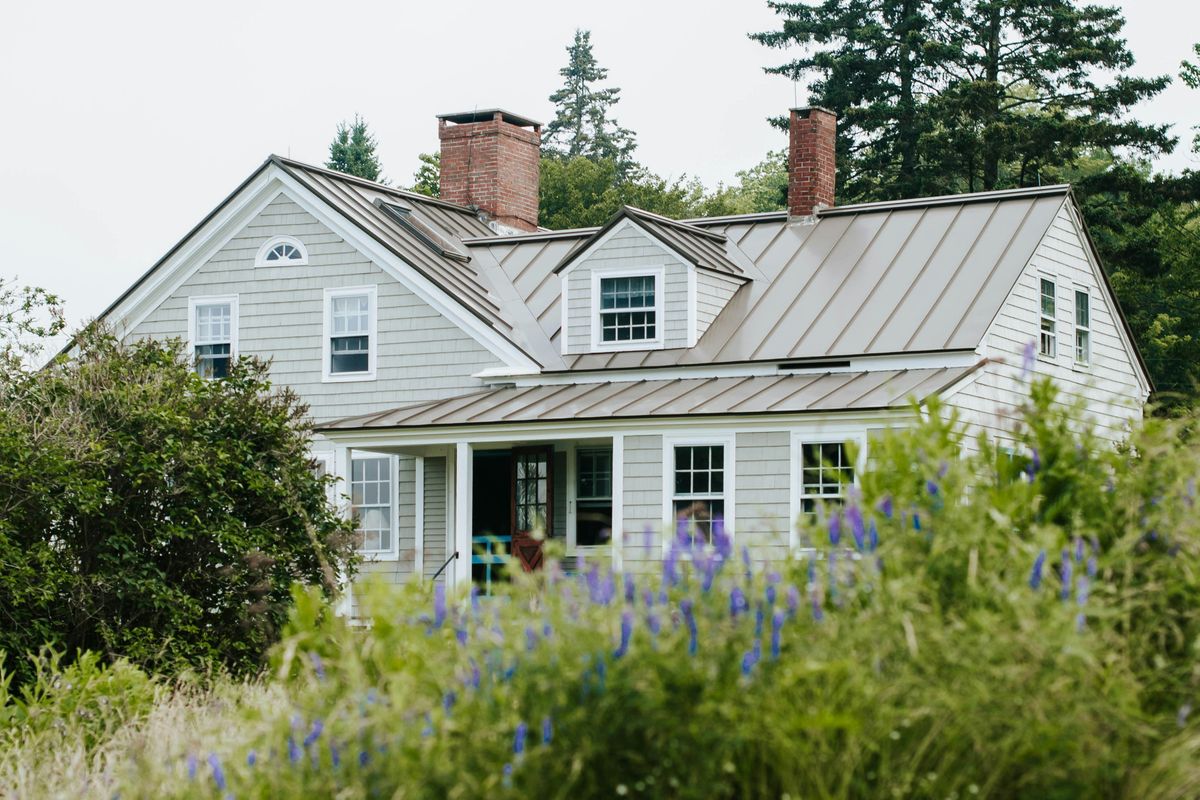Layer, layer, layer.
14 Landscape Design Tips To Make Your Front Yard Look Expensive (For Less)
Theresa Gonzalez is a content creator based in San Francisco and the author of Sunday Sews. She's a lover of all things design and spends most of her days raising her daughter Matilda.
Committing to a landscaping project can dramatically upgrade your home's curb appeal and boost its property value — it's an investment absolutely worth making. And you can do it in stages to suit your budget! Recently, I turned my all-rock front yard into a lush, multifunctional oasis. Now, it features distinct areas: a cozy pebble circle with Adirondack chairs perfect for reading, a grassy spot ideal for kids/dogs to play, and native plants and trees that beautifully frame and shade the space. This upgrade not only transformed my home's aesthetic but also significantly improved its functionality. We have so much more usable square footage now that had been off-limits because the rocks were SO uncomfortable to walk over. If you're ready for a landscaping upgrade, take my advice and make a design plan first — it could make your house look way more expensive in the long run.
Here are 14 landscaping tips to DIY a stunning front yard with expensive curb-appeal!

Shutterstock
1. Layer Your Plants
You can sketch out a plan based on your usable space and how you hope to use it. Place taller trees and shrubs toward the back, medium-sized plants in the middle, and low-growing flowers or ground cover like clover, creeping thyme, or moss to create a full, lush look.

2. Grow Climbing Plants
Cover trellises and fences with climbing plants like jasmine or Bougainvillea, whatever suits your climate, to maximize green space and add visual interest to your front yard.

Omri Cohen
3. Plant Flowering Shrubs
Plant shrubs like hydrangeas, azaleas, or camellias that provide seasonal changes, like greenery in the cooler months and bursts of color come spring.

4. Choose a Variety of Textures and Colors
You'll want to mix different plant textures to add visual interest and depth to your landscaping. Some of the grasses, ground cover, flowers, and trees I used included White Fountain Grass, Lamb's Ear, Icelandic poppies, Bougainvillea (the peach variety), olive and lemon trees for my Northern California yard. My color palette was focused on the green and citrus color families. Talk to your local gardening store about plants that work best in your area and find ones that you love.

Shutterstock
5. Use Evergreen Plants for Structure
Planting evergreens like boxwood or juniper will help you maintain a lush appearance even during colder months while providing a structured framework for seasonal plants.

6. Plant Native and Drought-Resistant Plants
If you live in a drought-prone climate, look for plants that require minimal water and maintenance, such as succulents, lavender, or ornamental grasses.

7. Install Curved Garden Beds
If you have the space for it, design your landscaping with gently curved flower beds instead of straight lines to create a more organic look.

8. Grow Wildflowers
You won't regret converting a section of your yard into a wildflower meadow to attract pollinators and have pretty bouquets at full bloom. My daughter and I wanted to attract ladybugs and butterflies and chose our plants accordingly.

Shutterstock
9. Plants Edibles (No, Not That Kind)
Mix herbs, fruit-bearing plants, and veggies into your landscape for a sustainable and functional front yard that feeds your soul and your belly!

10. Plant Shade Trees
Deciduous trees can provide shade, improve air quality, and reduce your home's energy costs by keeping it cooler in the summer.

Shutterstock
11. Add Porch Plants
Along the lines of layering your plants, porch plants hung from above, such as ferns, petunias, or ivy, add charm, texture, and a touch of nature to your outdoor space.

Ben Ashby
12. Create a Focal Point
Design around a statement piece such as a reading nook (in the case of my space), a bird bath, a sculptural tree like a Japanese maple, or for a more traditional look, a flower-filled urn, surrounded by lush plantings to draw the eye and anchor the design.

13. Use Pots to Cover Concrete
Not blessed with a bed full of soil? No problem. Use potted plants to create an inviting, welcoming look to your front yard or steps.

14. Add a Pop of Color
Painting your door a bright color to contrast with all the lush greenery can really make your landscaping pop and your home exterior look strikingly good.
Be sure to sign up for our weekly email newsletter for more home decor inspiration!




















